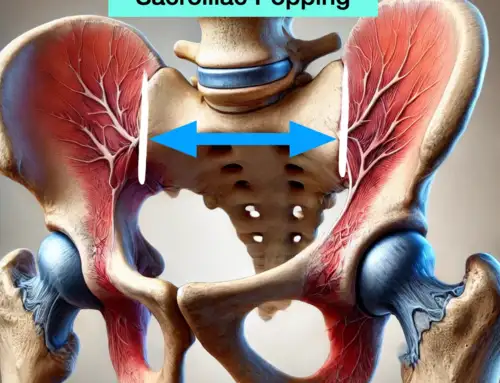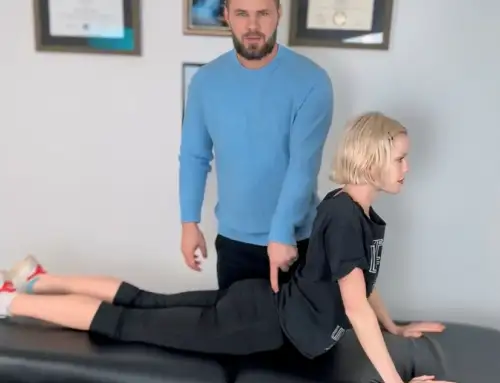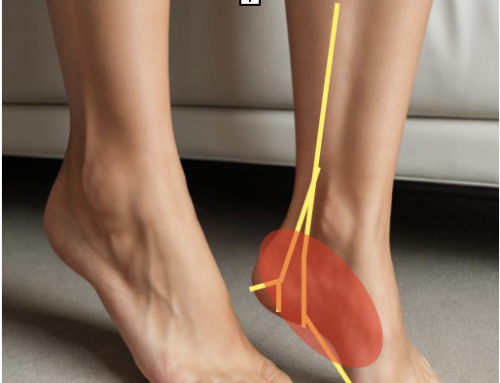Relieve Groin Pain: Up To Date Treatments
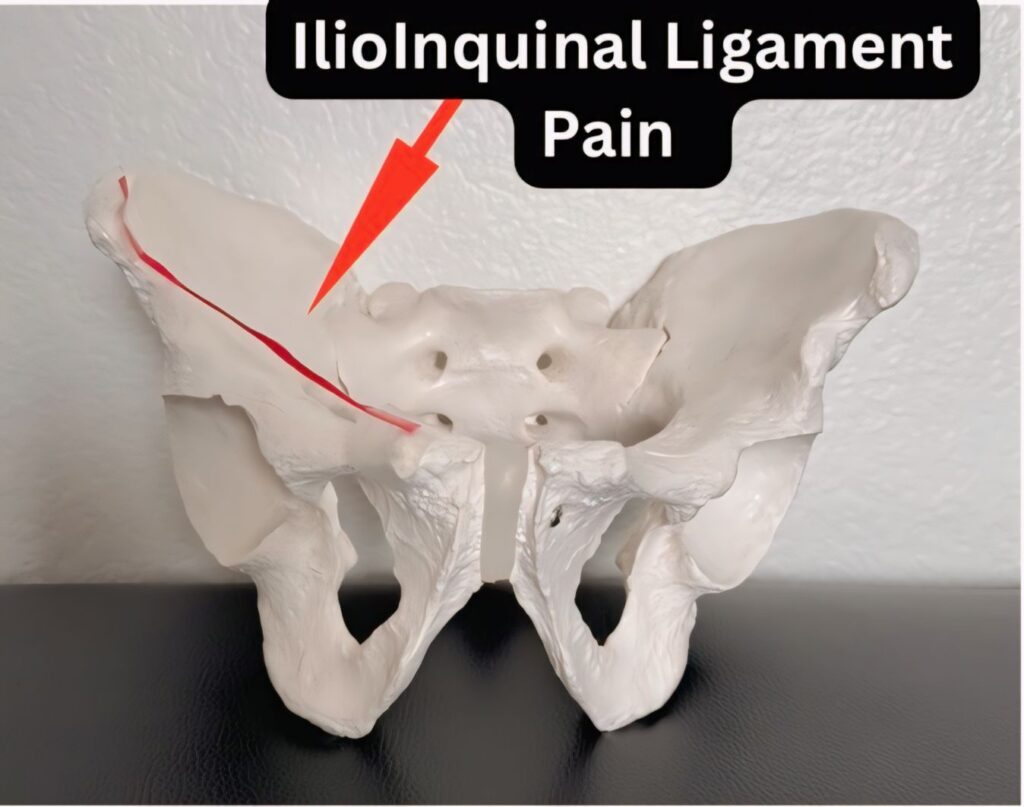
Ilioinquinal ligament discomfort can be a sign of underlying issues like hernias or nerve entrapment. It’s essential to consult a healthcare professional for proper diagnosis and treatment to avoid potential complications or worsening of the condition. Ilioinquinal ligament discomfort
Introduction:
The essential ilioinguinal ligament lies within the intricate network of connective tissues in the groin. Extending from the anterior superior iliac spine (ASIS) to the pubic tubercle, this crucial band forms a vital part of the inguinal canal, providing indispensable stability and support to the pelvic region.
Skip to the treatment section to read about the most up-to-date recommendations for 2024 on which exercises and therapies you should seek out!
Identifying Common Triggers for Athletic Pubalgia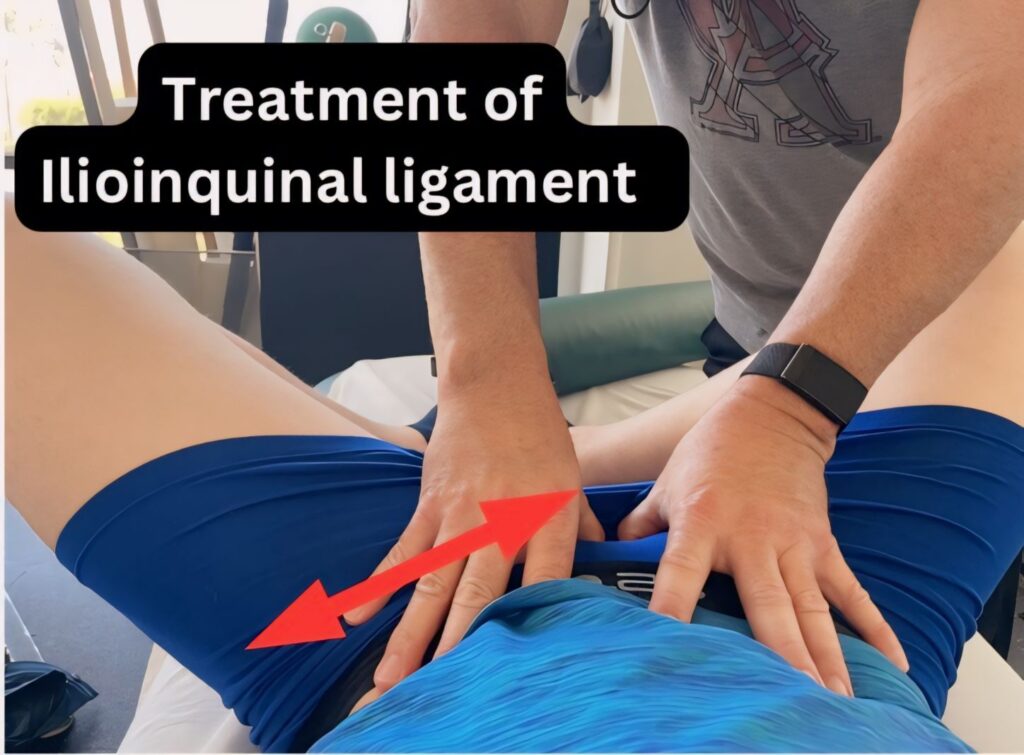
- Strains or injuries: Activities that place excessive strain on muscles and ligaments surrounding the groin area may result in discomfort involving this fundamental structure.
- Sports-related stress: Athletes engaged in activities requiring repetitive hip flexion, such as running or kicking, are particularly susceptible to experiencing athletic public.
- Hernias: Hernias affecting the inguinal canal can exert pressure on the ilioinguinal nerve, leading to pain alongside other symptoms.
- Post-surgical complications: Certain procedures performed in this region have been known to inadvertently impact or irritate the ilioinguinal nerve, causing persistent discomfort post-operation.
- Femoral, genitofemoral, obturator, and lateral femoral cutaneous nerves can also cause pain mimicking ligamentous pain.
While these factors significantly trigger what’s known as hockey-goalie syndrome, it is important to recognize that each individual’s experience may vary based on their unique circumstances and medical history.
Symptoms and Diagnosis
Discomfort in the groin area can have a considerable influence on everyday activities. Thus, it is critical to understand the signs of injured ilioinquinal ligament for accurate diagnosis and treatment. Let’s examine the main warning signs that are frequently linked to this illness and the diagnostic techniques that are employed to identify it.
- Groin Discomfort: The main symptom is localized discomfort in the groin region, varying from mild to severe depending on individual circumstances.
- Painful palpation when pressing, compressing the ASIS and Pubic bone simultaneously.
- Abdominal Ache: Some individuals may also feel abdominal pain or pressure in their lower abdomen alongside groin discomfort.
- Radiating Sensations: In certain instances, referred pain can extend down into the inner thigh or genital area.
- Numbness or Tingling: Those affected by this condition may experience numbness or tingling sensations along the nerve pathway as it passes over the structure.
- Aggravation with Movement: Activities like walking, running, or bending forward can worsen symptoms associated with sports hernia.
- Heightened Sensitivity: Increased sensitivity to touch or pressure in the affected area can lead to heightened discomfort during physical contact.
Diagnosis Techniques
Accurate diagnosis of conditions such as osteitis pubis necessitates a thorough evaluation by a healthcare professional specializing in pelvic and groin conditions. Here are some common diagnostic approaches utilized:
- Medical History Review: Your healthcare provider will inquire about your medical background, including any past injuries or surgeries that could contribute to your current symptoms.
- Physical Assessment: A comprehensive physical examination will be conducted to assess tenderness along the ilioinguinal ligament and surrounding areas, while specific maneuvers may be performed to reproduce your discomfort.
- Painful palpation when compressing the ASIS and Pubic bone simultaneously recreates pain.
- Imaging Procedures: In some cases, imaging tests such as ultrasound or MRI scans may be recommended to visualize structures within the groin region and rule out other potential causes of your symptoms.
- Nerve Blocks: A diagnostic nerve block procedure can help confirm if the ilioinguinal ligaments are causing your distress. An anesthetic is injected near the affected nerve to temporarily relieve pain.
- Electromyography (EMG): EMG evaluates electrical activity within muscles and nerves, identifying abnormalities that contribute to your symptoms.
The Impact of Groin Pain on Daily Life
Managing pain in ligament injuries can greatly influence your everyday life, affecting your emotional and physical health. In order to get the best care and effectively manage your pain, you must be aware of how this condition may affect you. Exercises Simple activities like walking, running, or climbing stairs can be difficult when one has ilioinguinal ligament problems causing pain in the groin. Sports and other high-intensity activities might not be appropriate for someone with severe pain until adequately treated.
Lifestyle Adjustments
- Making lifestyle adjustments such as engaging in low-impact exercises like swimming or cycling can help alleviate the mechanical stress impact on injured connective tissues.
- Using supportive devices like braces or compression garments provides stability during physical activities.
- Listen to your body, avoid overexertion, rest when needed, and pace yourself throughout the day to prevent worsening symptoms.
Treatment Options in 2024
As an expert in this field, let me walk you through conservative and surgical methods that could provide relief.
Conservative Care Methods
The most crucial treatment factors are listed below, as well as the traditional recommendations.
Manual Therapy: the muscles and fascia that connect to the inguinal ligament include the adductor muscles, obliques, and TFL.
Restoring Hip Internal Rotation to the hip: The hip should have at least 35 degrees of Internal rotation to reduce strain on the painful ligament.
Best Exercises: Core exercises that target the oblique musculature can reduce strain on this region. The deadbug exercise is a great starting point.
- Physical Therapy: Engaging with a skilled physical therapist can lead to a tailored exercise regimen to strengthen the muscles surrounding the ilioinguinal ligament and enhance flexibility. This targeted approach can aid in reducing pain and preventing further injury.
- Medication: Nonsteroidal anti-inflammatory drugs (NSAIDs) may be recommended to combat inflammation and ease discomfort associated with ilioinguinal ligament issues.
- Rest and Ice: Embracing adequate rest and applying ice packs to the affected area can reduce swelling and alleviate discomfort.
- Ultrasound nerve blocks to the genitofemoral, obturator, femoral, and lateral femoral cutaneous nerve can be diagnostic. This helps to determine the pain generator.
Surgical Solutions
In instances where conservative treatments fall short or if there is an underlying structural issue contributing to your pain, surgery might become necessary. Here are some surgical avenues worth exploring:
- Hernia Repair Surgery: If a hernia coexists with a ligamentous injury, hernia repair surgery could be advised. During this procedure, the surgeon will address any weakened or torn tissues within the abdominal wall.
- Nerve Decompression Surgery: For individuals grappling with nerve entrapment involving the ilioinguinal nerve, nerve decompression surgery could serve as a viable treatment option. This procedure aims to relieve pressure on compressed nerves by eliminating constricting structures or scar tissue.
Surgical intervention should only be performed after careful consideration in consultation with your physician.
Indicators for Surgical Intervention
While many cases respond well to conservative measures alone, certain scenarios warrant surgical consideration:
- Severe or persistent pain significantly impedes daily activities and quality of life.
- Structural irregularities like hernias necessitate surgical correction.
- Nerve entrapment leads to debilitating symptoms.
Preventing Groin Pain: Tips from Experts
The following professional advice will help you avoid aggravating the problem:
- Maintain a healthy weight.
- Warm up before physical activity
- Use correct technique during exercises.
- Wear supportive gear
- Gradually increase intensity
- Stay hydrated
- Incorporate core strengthening exercises.
- Take breaks from prolonged sitting/standing positions.
- Seek early diagnosis & treatment.
Selecting the Best Healthcare Provider for Groin Pain Relief
Selecting the right healthcare provider is paramount. Not all medical professionals are well-versed in treating groin and pelvic discomfort, so it’s crucial to consider specific factors before deciding.
Choosing the Right Healthcare Provider
- Specialization: Opt for a provider specializing in managing groin and pelvic pain. This ensures they have extensive knowledge and experience tailored to your condition.
- Experience: Consider the provider’s years of experience diagnosing and treating pelvic girdle pain. An experienced professional will better understand your unique needs and craft an effective treatment plan.
- Credentials: Verify the credentials of potential providers, including their medical degrees, certifications, and affiliations with reputable organizations focused on pelvic pain management.
- Referrals: Seek recommendations from trusted sources like your primary care physician or other healthcare professionals with connections in this specialized field.
- Communication Skills: Effective communication between you and your healthcare provider is vital for successful treatment outcomes. Choose someone who listens attentively, explains clearly, and addresses any concerns or questions you may have.
- Treatment Approach: Inquire about the provider’s preferred method for management- whether they focus on conservative techniques like physical Therapy or medication management or specialize in surgical interventions if necessary.
- Availability: Consider how accessible the healthcare provider is regarding appointment availability and location convenience. Finding someone who can accommodate your schedule without causing unnecessary delays in receiving appropriate care is essential.
Remember that finding the right healthcare provider may require research and visiting multiple specialists before deciding. Don’t hesitate to ask questions during consultations or seek second opinions if needed – aim to find a provider who possesses expertise and instills comfort and confidence in managing your groin discomfort effectively.
By selecting the best healthcare provider, you can take a significant step towards alleviating anterior pelvic pain and enhancing your overall quality of life.
Reach out to book with Dr. Dean, DC, in California by texting or calling 323-354-6077 or emailing him at drjustindean@gmail.com
Practice Located in LA county at 12401 Wilshire Blvd, Suite 105, Los Angeles, CA 90025
Our editorial process includes evidence-based practices, interventions, and recommendations.
Medically Reviewed by Dr. Justin Dean, DC on March 6, 2024



